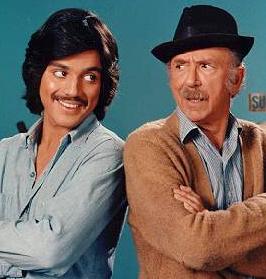 A new study suggests marketers should embrace a variety of media, in different languages, to reach Canada’s growing ethnic groups.
A new study suggests marketers should embrace a variety of media, in different languages, to reach Canada’s growing ethnic groups.“Diversity in Canada” looks at the media usage of six population groups in Toronto, Vancouver and Montreal, including Canadians of Chinese, South Asian, West Asian, Hispanic and Italian backgrounds, as well as black Canadians. Three thousand respondents, 15 and up, were interviewed by phone in English, French, Cantonese, Mandarin, Punjabi, Hindi, Urdu, Spanish and Italian.
Conducted by Solutions Research Group in Toronto, the independent syndicated study revealed that in Vancouver’s population of over two million, roughly 350,000 to 400,000 “cannot be effectively reached with English,” says Kaan Yigit, president of Solutions Research Group, which conducted the study.
Internet usage by these ethnic groups is slightly above the market benchmark (the general population of the three cities) at 88%. The average time spent online, per day, is also higher, at 1.8 hours per person compared to the market benchmark of 1.7 hours. Chinese Canadians are particularly active users of the Internet (at 80% versus the market average of 68%), averaging 2.4 hours per day, about the same amount of time they spend with television.
There is an outdated stereotype, says Yigit, an “old-school thinking that new Canadians are not as established, they can’t afford high-speed Internet or computers, and we found it’s just the opposite.” Many use the Internet to keep in touch with family, to connect through a virtual community centre, and to access content from around the world, says Yigit who presented some of his findings on issues for the financial industry at a Broadcast Research Council late last month (see MarketingDaily Feb. 28).
As for traditional media, the survey found major ethnic groups are lighter users of radio, TV and newspapers. The five-day readership of daily papers among ethnic groups is 16% lower than among the market benchmark, while radio listening is 9% below and TV viewing is 4% below average.
But though their TV time is slightly lower, ethnic Canadians are more likely to have digital cable or satellite TV, at 41% versus the market benchmark of 39%. Black and Chinese Canadians lead, at 47% and 44% respectively.
The TV viewing is “more spotty,” says Yigit, because some ethnic groups have more choices available in their language. So advertisers who go with traditional measurement metrics “are constantly undervaluing and underestimating what ethnic media is delivering, and constantly overestimating what traditional media is delivering,” he says. “There is a significant chunk of the population that’s not being measured, but when it comes to calculating audience reach and average minutes, they’re still included in the base, as if they behave like everyone else. The current measurement system is out of sync with what’s happening in our major markets, very fundamentally.”
Ethnic media plays an important role in the lives of respondents, particularly among Chinese and South-Asian Canadians. Three quarters of both groups, along with 55% of Hispanic Canadians have used at least one ethnic radio, TV station or newspaper in the last seven days. On the other hand, half of Chinese Canadians and 57% of South Asian Canadians are reached by English-language newspapers. English radio reaches 44% of South Asian Canadians and 53% of Chinese Canadians, while English TV reaches 74% of South Asian Canadians and 65% of Chinese Canadians.
And slowly marketers are taking notice, he says, judging by their interest in the study. “We are reaching a tipping point in terms of people’s attention to this areaÉ.The smart money and the smart marketer is moving to that thinking to use whatever language is needed to reach a certain target.”
Sarah Dobson
MarketingDaily.com














